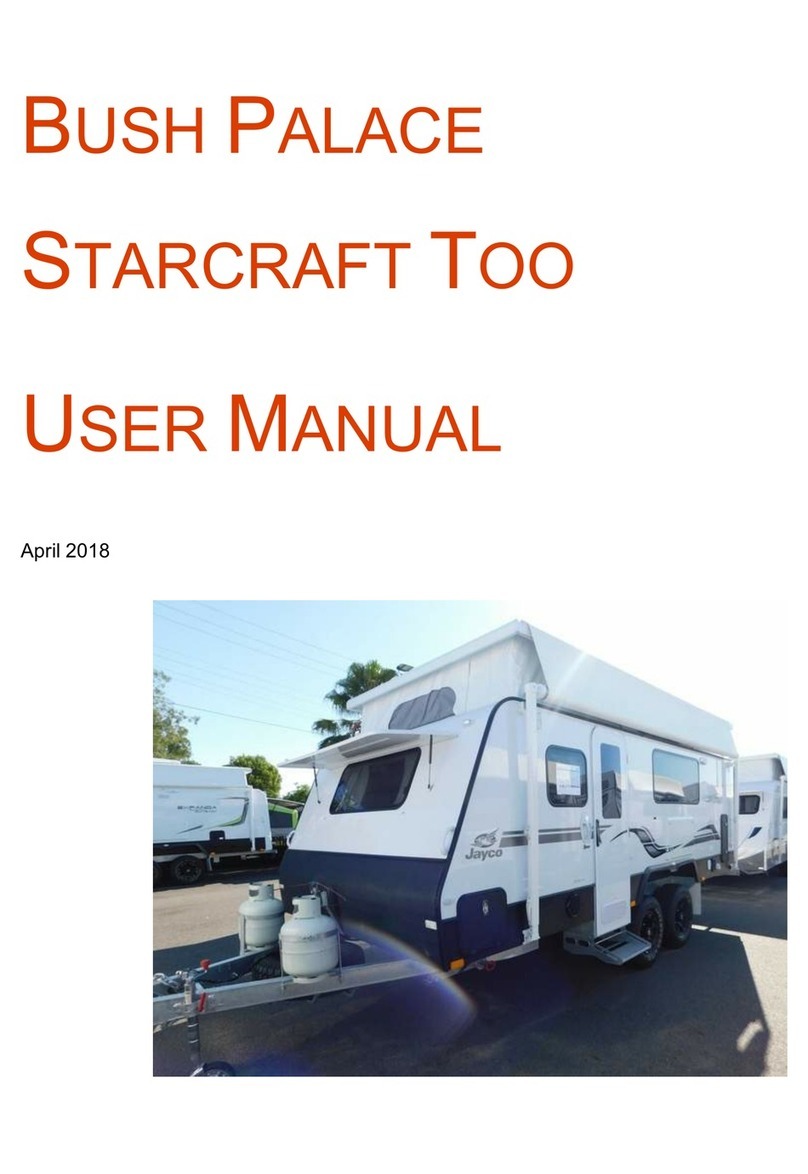
TOWING CODE
4
User Payload (UP)
The difference between the MIRO and
MTPLM (excluding potential MTPLM
upgrade). The user payload allows for items
common to all occupants, such as food,
cutlery, pots, pans, clothing, footwear,
bedding, sports equipment etc. The user
payload also includes an allowance for the
auxiliary battery.
The UP is calculated by the following
formula:
10L + 10N + 50.
L is the body length of the caravan in meters.
N is the number of berths.
50 is for normal equipment carried in the
caravan, a sample list is given below.
TV ........................................................... 3kg
Kettle .................................................... 0.5kg
Bed linen ................................................. 6kg
Crockery .................................................. 5kg
Saucepans .............................................. 3kg
Wastemaster ........................................... 6kg
Aquaroll (empty) ...................................... 5kg
Waste bin ................................................ 1kg
Cutlery ..................................................... 2kg
Toilet fluid etc ....................................... 2.5kg
Battery ................................................... 16kg
THE CARAVAN TOWING CODE
Industry Payload Standard for UK touring
Caravans
This standard has been prepared by the
National Caravan Council and formulated
with input from Industry Experts. The
standard applies to UK specification Touring
Caravans and will apply for the NCC
certification from 2011 onwards model year
Touring Caravans.
From the 2012 model year onwards, the
method of calculating the Mass in Running
Order (MRO) and user payload figures are in
line with European Vehicle Directives and
conform to requirements for European Whole
Vehicle Type Approval EWVTA, 2007/46/EC
(The Framework Directive) and the directives
referenced therein.
Other Notable Weights/Capacities
1) 9kg of water in the water heater.
2) 2kg of water in the toilet holding tank (this
is the maximum recommended by
Thetford).
3) The weight of the spare wheel is 17.5kg.
DEFINITIONS
Maximum Technically Permissible Laden
Mass (MTPLM)
The fully laden mass of the caravan in the
manufacturer’s standard specification which
is stated in the manufacturer publications by
the manufacturer for tow car matching. This
mass takes into account the specific
operating conditions including factors such
as the strength of the materials, load
capacity of the tyres etc, and can be found
on a plate affixed to the caravan, usually
near the entrance door.
Please note: The MTPLM is the maximum
weight that the caravan can be loaded to,
this mass must NOT be exceeded. However
most models can have the MTPLM upgraded
in capacity; this must be approved by Lunar
Caravans Ltd via the dealership. Please
contact your dealership for further details.
Mass In Running Order (MIRO) or (MRO)
This is the weight of the caravan as it leaves
our factory (inclusive of the electrical hook-up
cable at 6kg and the winding handle at 1kg)
plus the following:
8kg gas bottle allowance.
Note: The MRO is calculated with the water
tanks empty, any water in the tanks during
travel must be accounted for in the user
payload. It is also advisable to empty such
tanks prior to transit.






























